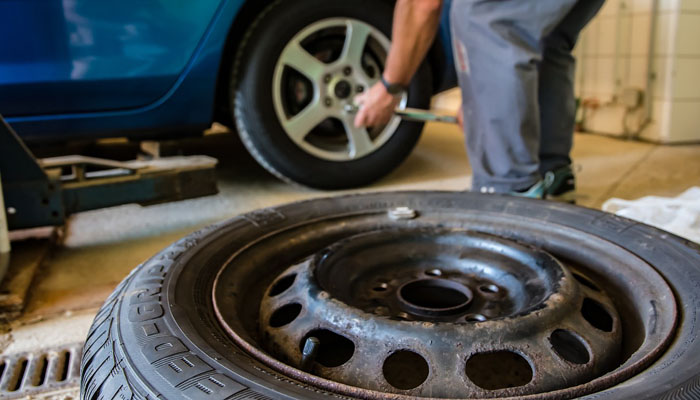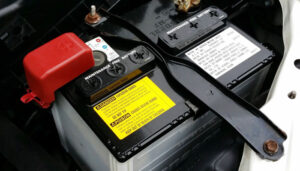Maintaining the correct car tire pressure boosts your car’s performance, improves safety, and saves fuel. Whether you’re correcting over-inflation or preparing for an off-road trip, learning how to release tire pressure safely gives you more control over your vehicle. This guide walks you through everything—from the tools you’ll need to how often you should check your tire pressure.
Understanding Car Tire Pressure
Tire pressure measures how much air (in PSI—pounds per square inch) sits inside your tires. Keeping that pressure in the right range helps your tires wear evenly and keeps your car driving smoothly.
- Under-inflated tires cause more friction, lower gas mileage, and increase the chance of blowouts.
- Over-inflated tires reduce contact with the road, cause bumpy rides, and wear the tread unevenly.
Recommended Tire Pressure for Most Vehicles
Most cars need 32–35 PSI when cold. However, these numbers can change depending on:
- Your vehicle type (car, SUV, or truck)
- Tire size
- Load weight
- Outside temperature
You’ll find your car’s recommended tire pressure on a sticker inside the driver’s door frame or in your owner’s manual.
Tools You Need to Check and Adjust Tire Pressure
Having the right tools makes managing tire pressure simple. Use the following:
| Tool | Purpose |
| Tire Pressure Checker | Measures your current tire pressure |
| Digital Gauge | Displays accurate PSI readings |
| Air Compressor | Adds air when pressure is low |
| Valve Core Tool | Releases air from overfilled tires |
Choose a tire pressure checker with a clear display and a built-in release valve for the best results.
Signs Your Tire Pressure Is Too High
Watch for these signs to know if you need to let out some pressure:
- Your ride feels too bouncy or rough
- The car takes longer to stop
- Tire tread looks thinner in the center
- Steering feels stiff or slips on wet roads
How to Lower Tire Pressure Safely
Letting out air from your tires takes only a few steps:
- Park your car on level ground and turn it off.
- Remove the valve cap from the tire.
- Use the release pin on your tire gauge or valve tool to press the valve stem.
- Listen for the hissing sound as the air escapes.
- Check the pressure using a digital gauge.
- Repeat until the PSI matches the recommended level.
Always check the pressure after each release to avoid deflating too much.
The Fastest Way to Let Out Tire Pressure
Need a quick fix? Follow this:
- Grab a flathead screwdriver or use the back of your gauge.
- Press the pin inside the valve stem to let out short bursts of air.
- Check the pressure after each burst.
Work carefully to avoid letting out more air than needed.
How to Let Out Air from a Tire Without Tools
No tools? No problem. Here’s a DIY method:
- Use a pen cap, key, or even a stick to press the valve stem pin.
- Let air escape for 3 to 5 seconds at a time.
- Estimate the pressure drop and head to a service station to check the actual PSI.
How Often Should You Check Your Tire Pressure?
So, how often should you check your tire pressure?
Check it:
- Every two weeks
- Before long trips
- When the seasons change
- After hitting a pothole or curb
Tires lose about 1 PSI every month, and colder temperatures can drop pressure even more.
Summer Tips You Need to Know
When summer rolls in, the rising temperatures heat up more than just the pavement—they also increase your car tire pressure. For every 10°F rise in temperature, tire pressure can go up by about 1 PSI. If you don’t account for this, you could end up driving on over-inflated tires.
What to Do in Summer:
- Check your tire pressure early in the morning.
Heat can give you a false high reading later in the day. Test when tires are “cold”—before driving. - Don’t deflate tires just because it’s hot.
Your tires naturally expand in heat. If you deflate based on a hot reading, you could under-inflate them. - Stick to your manufacturer’s PSI recommendation.
Use the cold tire pressure values listed on your vehicle’s door jamb—even in summer. - Keep your tire pressure checker in the car.
Carry a digital or manual gauge and check the pressure every two weeks during hot months. - Avoid parking in direct sunlight.
Park in shaded areas or garages to protect tires from extreme surface temperatures that can cause pressure spikes. - Inspect your tires for bubbles or uneven wear.
Heat can stress tires, especially if they’re already overfilled or aging.
Pro Tip:
If you plan to go on a long highway trip during summer, double-check tire pressure before you leave. Heat plus high speed can push tire pressure to unsafe levels.
Worried about car tire pressure for used Japanese cars? Fret not! Carused.jp is here to help make sure that you get the top-quality used cars from Japan!



